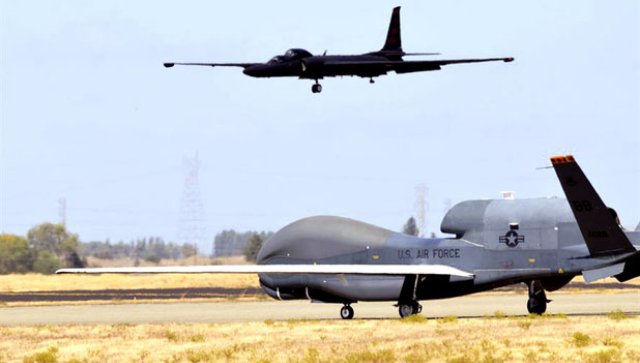Using a cooperative research and development agreement, the Air Force Life Cycle Management Center, partnering with Northrop Grumman and Air Combat Command, has developed an innovative solution to the tricky problem of how to connect existing and future information gathering sensor capabilities, not currently designed for the Block 30 RQ-4 Global Hawk high altitude long endurance unmanned aircraft system, to link with the airframe system. Through the agreement, the ISR payload adapter was conceived and flown within seven months.
“The IPA allows the RQ-4 to adapt and go beyond its current sensor capabilities. An example is the recent successful flight, for the first time ever, of an Air Force legacy system, the Senior Year Electro-Optical Reconnaissance System-2 (SYERS-2) intelligence gathering sensor, on the Global Hawk,” said Col. Darien Hammett, the Global Hawk program director. “This flexibility permits us to communicate to potential future interested vendors how to physically and electronically connect sensor platforms to the Global Hawk — allowing adaptability in payloads, increased range and the achievement of the highest National Imagery Interpretability Rating Scale available. With the development of the IPA, our Block 30 airframes will gain further capability in supporting future and current information gathering sensor systems availability.”
The current Global Hawk Block 30 aircraft is capable of carrying systems such as the Enhanced Integrated Sensor Suite, Airborne Signals Intelligence Payload. These electro-optical, infrared, radar, and signals intelligence sensors enable remotely piloted aircraft to detect movements, assist with humanitarian operations, and find the enemy. Increasingly, current and future military RPAs use multi-intelligence sensor payloads to perform those missions. As the demand for capability increases and component technology proliferates it is very important that sensor information payloads be adaptable and flexible in design to allow increased ability and option of choices.
With the success of the SYERS-2 flight, there are now plans to demonstrate the optical bar camera sensor, and fully integrate the next generation UTC Aerospace Systems MS-177 on the Global Hawk.
“The IPA allows vendors to use some or all of the 17 physical attachment points on the IPA, know how much power is available, and make crucial data exchanges with the aircraft. Basically everything needed to design, build and mount a sensor on a Global Hawk,” Hammett said. “Opening up the architecture of the air system will provide added sensor technology opportunities through increased competition, which is our goal.”
Source: US Air Force

